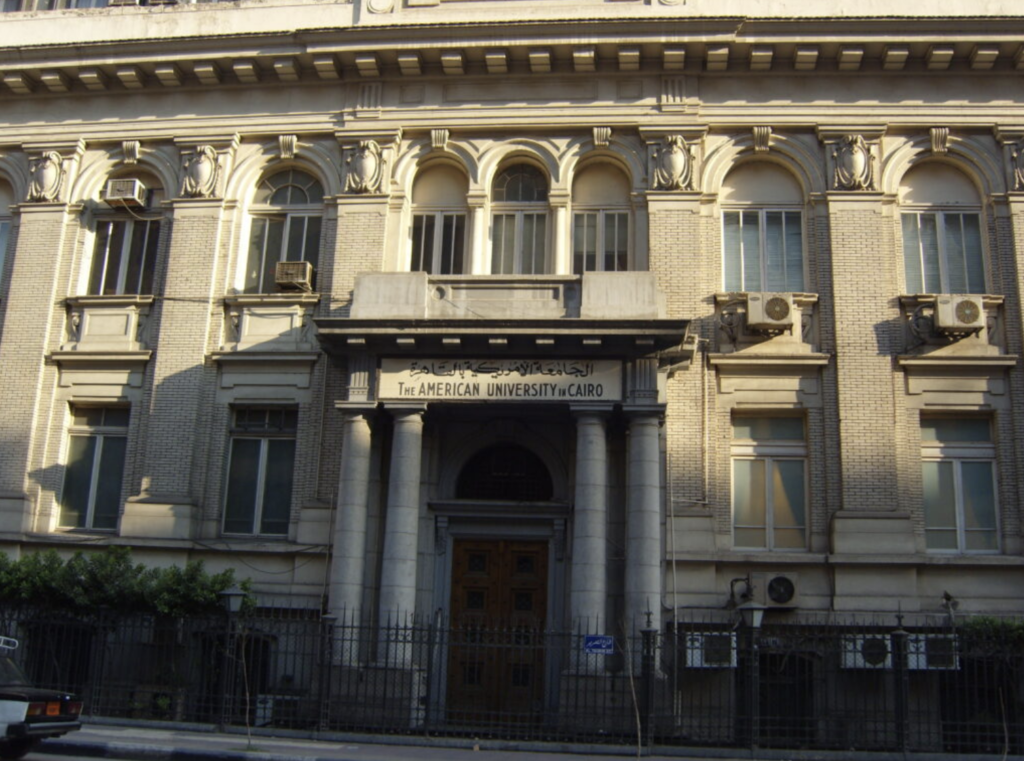The Current Landscape of Arabic Programs in the Middle East

By Luke McMahan / Arab America Contributing Writer
With ceasefire talks to end the war in Gaza consistently failing, American diplomatic voices sympathetic to Arabs are severely needed now and in the coming decades. However, a major tool for achieving this—knowledge of the Arabic language, particularly the specific dialect of the region in question—is becoming increasingly difficult for American students to acquire. Over the last twenty years, the landscape of American Arabic programs in the Middle East has significantly changed, marked by a decline in both students and available organizations.
I recently returned from a semester studying intensive Arabic in Amman, Jordan. My university has a robust undergraduate and postgraduate Arab studies program. Still, only three MENA countries are offered for study abroad: Amman in Jordan, several cities in Morocco, and Doha in Qatar. These locations provide three very different experiences in terms of language study. English is spoken quite widely in Doha, making it less immersive—an immersion crucial for retaining Arabic, given its utterly different structure compared to English.
Challenges with Regional Dialects
As for Morocco, the Darija dialect differs significantly from Modern Standard Arabic (MSA), which is almost exclusively taught in American schools, as well as from the dialects of the Levant and regions further east. Consequently, Moroccan Arabic programs featuring Darija require American students with no background in colloquial Arabic to learn a new language. Furthermore, except for those planning to work or do business in Morocco, Darija is a far less practical dialect for most students. This leaves Jordan as the best option for American undergraduates: the dialects spoken there are much closer to MSA, allowing for an easier transition, and they are more widely understood outside of Jordan than Darija. The country also offers ample opportunities for linguistic immersion, especially compared to Doha.
Decline in Study Opportunities
Twenty years ago, prospective Arabic students had the opportunity to attend schools or programs in nearly every MENA country, with Egypt and Lebanon being the most popular due to their significant global cultural influence. However, following the Arab Spring, COVID-19, and other geopolitical issues, study opportunities in many countries—and with them, general participation in Arabic studies—have gradually begun to disappear. For example, the American University in Cairo (AUC) recently ended its partnership with the well-known and respected CASA program despite being the first university to host its students over 50 years ago.
Levant universities that previously hosted American Arabic study programs may still offer classes for American students, as AUC does. However, for one reason or another, connections with universities in the U.S. have faded. It is challenging to pinpoint the specific causes in each case beyond their association with broader geopolitical and cultural trends, as situations like the AUC case are not widely publicized. Consequently, students like myself, seeking study abroad opportunities within the constraints of their college credits, often find themselves choosing between Jordan, Morocco, and, to a lesser extent, some scattered programs in the Gulf.
The Importance of Immersive Programs
Suppose the availability and diversity of Arabic program opportunities continue to decline. In that case, the potential for more excellent Arabic knowledge to foster improved cultural and political relations between Arab-speaking countries and the United States will also diminish. The most widely used MSA textbook for Arabic students, Al-Kitaab, published by Georgetown University, offers a robust grammatical lesson plan. However, Al-Kitaab does not provide a diverse or practical vocabulary nor sufficiently develop the speaking and comprehension skills necessary for living in the Middle East. This limitation is not the textbook’s fault; rather, experience in an Arab-speaking country is essential for students without an Arabic-speaking background to achieve language proficiency. This makes the study above abroad programs all the more crucial, as one cannot become fluent through a textbook alone.
The limited vocabulary taught in Al-Kitaab mainly falls within political and economic topics. This focus aligns with Georgetown University’s reputation for its international politics programs. Thus, the textbook is designed to prepare students for careers in government, where they would primarily use MSA to discuss foreign policy.
For the future of mutually beneficial U.S.-Arab relations, Arabic cannot be reduced to a tool solely for expressing American foreign interests. Without a broad range of immersive Arabic programs in the Middle East, American students miss out on a crucial step toward fluency, along with the opportunity to learn a regional dialect and its cultural insights.
Check out our blog here.








